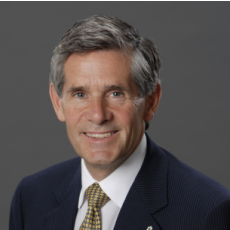Rob, do you believe that the mining industry gets undeserved negative publicity? If so, what are the impacts of that?
I would say so. The negative view of mining has had a dramatic impact on student enrollment in geology and mining engineering courses. In America, this enrollment has dropped by at least 80% since the 1970s, and in Canada, by almost 65%. This negative perception persists despite significant advancements in the industry. We have good examples of reclamation and environmental stewardship, but from kindergarten through adulthood, the view remains that mining degrades the environment. This perspective assumes stopping mining would allow life to continue as usual, ignoring the deficit of metals needed for modern and future technologies.
Do you recognize that the industry may be partly to blame for its negative image?
Oh yes, one cannot deny the past. There was historically little focus on environmental sensitivity in the past, as governments prioritized revenues and employment. However, with today's measurement capabilities and global visibility, the industry has been compelled to change. While there may have been instances of deliberate environmental harm, the current requirement for social license mandates that mining companies must now demonstrate good stewardship of the environment as a crucial part of their business today.
Have you been struggling to attract major investors due to the industry's reputation?
No, I think the market for mining has shrunk because other investment areas seemed more attractive and were delivering higher returns. It is only in the last year or two that metal markets have started to rebound, and people are beginning to realize the underinvestment in an industry needed to support ongoing urbanization and the energy transition to address climate issues. This realization has started to drive metal prices up, particularly for batteries, solar cells, wind generators, and other climate-related technologies.
The renewed focus on metal markets, driven by the need for urbanization and energy transition, has started to attract investment again. The underinvestment in the industry is becoming apparent, leading to rising metal prices and renewed interest from investors, particularly in technologies aimed at combating climate change.
The growing awareness of the industry's importance for technological progress and climate solutions gives me optimism that investment in the mineral industry will increase. This shift in perception should lead to more positive attention and financial backing in the coming years.
What has changed at McEwen Mining over the last year, particularly with the Gold Bar Mine?
Since September 2022, our share price has surged by 327%, far surpassing the performance of major indices and metals. This growth was largely driven by the investment in our copper asset and its successful financing, attracting global shareholders like Rio Tinto and Stellantis. Our precious metal operations, including mines in Nevada, Timmins, and Argentina, have also seen increased production and decreased costs. Last year, Gold Bar faced operating challenges, but we managed to overcome them by changing contractors and are now looking forward to adding production through our acquisition of Timberline Resources, which offers good exploration potential.
Despite setbacks like floods, the Gold Bar Mine has made significant strides. The acquisition of Timberline Resources adds valuable assets to our portfolio, with potential for increased production. Overall, our operations have improved, reflecting positively on our share performance and strategic investments.
Tell us more about the Los Azules copper project in Argentina. You referred to it as the future ‘jewel of the copper industry’…
Los Azules boasts 37.6 billion pounds of copper, making it the eighth largest undeveloped copper deposit in the world. Converting this to a gold equivalent at current prices, it equates to a deposit of 70 million gold ounces. This is comparable to the output of Canada's most prolific gold district, Timmins, over the last century. Los Azules has a projected operating cost of $1.07 per pound, placing it in the lowest cost quartile for the industry. With a 27-year mine life and significant production potential, the project's initial five years could yield 400 million pounds of copper annually.
We are currently working towards a bankable feasibility study to be completed in the first half of next year, followed by construction engineering. We aim to start site construction by late 2026 and begin production by 2030. This project represents a major growth opportunity for McEwen Mining and underscores our commitment to expanding our copper portfolio.
Los Azules is a major focus for us, with substantial copper resources and low operating costs. Its scale and economic potential make it a standout project in the copper industry. With ongoing development and strategic planning, we anticipate significant contributions to our future growth and the broader market's needs.
It seems that part of the project's allure stems from its sustainability credentials. Could you tell us a little about that?
Two years ago, when we began designing the mine for Los Azules, I wanted to start with a clean sheet, so I asked a renowned architect in the green living, sustainable building arena, Jason McLennan, to help us transform the image and operations of our mine of the future.
Our objective is to build the world’s first regenerative copper mine. One that produces green copper, carbon neutral and ecologically responsible. To create a mine that would show the world that our industry can provide the materials we need for a renewable society but without the historic legacy of environmental damage.
Accommodation on site is designed to be a biosphere of health and life which grows its own food, collects and treats its own water, generates energy without emissions with a giant solar roof and compared to a similar size conventional copper, our mine of the future is designed to consume one quarter the water and emit less than one third the carbon and by 2038 be carbon neutral. It will be a model of sustainability and where the best miners will covet to work.
There has been political change in Argentina, with the new president, Javier Milei, expressing a strong ambition to develop copper reserves. Are you optimistic about these developments?
Definitely. There is a fresh wind of change blowing through the government. In May, I met with the Argentinian President, Javier Milei an economist by training, who understands the need for stability agreements, lower taxation and removing foreign exchange controls in order to attract large foreign investment. Mining is a high-paying, long-lasting industry that creates secondary and tertiary industries. His proposals, with some modifications, are progressing through the Lower House for approval. This has garnered positive attention from international bodies such as the IMF, that recently increased its financial support.
Argentina has immense potential but has been held back by the policies of the previous populist governments. Despite initial resistance, more politicians are seeing the value in attracting foreign investment in order to move the country forward. With 40% of the population living below the poverty line, there is a growing consensus on the necessity of foreign investment for economic progress. I am very optimistic and committed to supporting these efforts.
What do you hope to be able to tell us about McEwen Mining three years from now?
In three years, I hope to report that we have commenced construction on Los Azules and possibly discovered another copper deposit nearby, as porphyry copper deposits often occur in clusters. I also aim to see a 50% increase in our gold production and a significant reduction in costs, along with a substantial increase in our resource base due to our large investment in exploration, particularly in Canada.
Additionally, we are working with our partner in southern Argentina at the San José mine in southern Argentina and expect improvements from our exploration at Gold Bar and Timberline. Despite the unpleasant experience of a reverse stock split, I hope we will have regained much of what was lost in terms of share performance. With a personal investment cost base of $220 million between McEwen Mining and McEwen Copper, I aim for a significant return on my investment and that of our shareholders.





